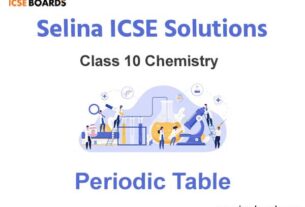Q) Multiple choice questions:-
1) Pylorus is an opening from:
a) oseophagus into stomach
b) mouth cavity into stomach
c) stomach into intestine
d) intestine into rectum
Solution: (c) stomach into intestine
2) Gastric juice contains
a) HCl and pepsin
b) pepsin and trypsin
c) trypsin and HCl
d) amylopsin and pepsin
Solution: (a) HCl and pepsin
3) The water from the digested food is mainly absorbed by
a) stomach
b) duodenum
c) colon
d) rectum
Solution: (c) colon
4) Which one of the following pairs of types of teeth perform one common function as stated against it?
a) Incisors, canines – Holding
b) Canines, premolars – Biting
c) Premolars, molars – Grinding
d) Molars, incisors – Tearing
Solution: (c) Premolars molars – Grinding
Q) Very Short Answer Type:-
Question 1) What is the dental formula of a normal human adult?
Solution:
The dental formula of a normal human adult is:
Human adult = 2,1,2,3/2,1,2,3 = 32 (Permanent teeth + Wisdom teeth)
Question 2) Mention two reflexes which occur when a person chews and swallows food.
Solution:
When someone eats and consumes food, two reactions take place:
1. Saliva is secreted as a reflex when someone chews.
2. When someone swallows, their tongue automatically presses up and back against their roof (palate).
Question 3) Consider the following two statements A and B and select the right option from (i)-(iv) about their correctness.
a) Small intestine is shorter than large intestine.
b) Small intestine is wider than large intestine.
Solution:
Both of the claims are false. The small intestine is seven meters longer than the big intestine (1.5 metres). The big intestine is also known as such because it is wider than the small intestine.
Q) Short Answer Type:-
Question 1) What is digestion? Why do only animals require a digestive system?
Solution:
The process of digestion involves the work of enzymes to break down complex dietary molecules into simpler ones.
A digestive system is required:
(i) It is necessary to break down large, complex molecules like lipids, proteins, and carbohydrates into smaller ones. The body may then take these smaller molecules in and use them.
(ii) Digestion is the sole process that can convert complex food molecules into their simpler form.
(iii) Large complex macromolecules found in food are broken down into smaller, simpler molecules during digestion, however this process can only take place in specific digestive system compartments.
Question 2) What are the end products of the digestion of: starch, proteins and fats respectively?
Solution:

Question 3) Why is there no enzyme to digest vitamins?
Solution:
Cells utilize vitamins in their natural state. They don’t need to be digested. No enzyme is needed to digest vitamins since they are either fat- or water-soluble. They enter the bloodstream immediately from the digestive system, where they are absorbed and used by the cells as needed. In addition, vitamins themselves function as enzymes or catalysts in crucial chemical processes that happen inside the body.
Question 4) How is thorough chewing of food helpful in digestion?
Solution:
It is crucial to fully chew our meals since doing so aids in the breakdown of complex dietary components into simpler ones. Chewing causes saliva to be released from the salivary glands. Saliva assists in creating a bolus of food that is easily swallowed and moistens the meal. Additionally, saliva has specialized enzymes that facilitate the breakdown of carbohydrates.
Question 5) What is the function of rectum?
Solution:
Undigested food is temporarily stored in the rectum. The feces are expelled from the body through the anus by voluntary smooth muscles.
Question 6) What is roughage? Give two examples.
Solution:
Cellulose makes up the majority of the dietary fiber known as roughage. Our bodies are unable to digest it because they lack the enzymes necessary to break down cellulose.
Roughage illustrations:
1. Fruits
2. Green leafy vegetables
Question 7) Mention two ways in which the ileum of the mammal is adapted for the absorption of digested food.
Solution:
The ileum has been modified to absorb digested food in the following ways:
(1) It is quite lengthy to give more surface area for absorption.
(2) The presence of a lot of villi to expand the surface area even further
Question 8) The stomach secretes gastric juice, which contains hydrochloric acid. What is its function?
Solution:
Hydrochloric acid’s uses include:
(1) When combined with food, it eradicates any germs that may be present.
(2) It makes pepsin active to interact with proteins.
Q) Long Answer Type:
Question 1) Prepare a possible vegetarian menu for your dinner which would provide all the necessary nutrients.
Solution:

Question 2) What are the main characteristics of enzyme?
Solution:
1. A protein, an enzyme is destroyed by heat because of its primary property of being a protein.
2. The substrate is the sole type of material on which it functions. This makes it extremely particular.
3. Because it serves as a catalyst, it may be applied repeatedly.
4. It never slows down a chemical reaction; it merely changes its pace.
5. From the established substrate, it always creates the identical final goods.
6. It only functions optimally at a certain pH.
7. It functions best in a small temperature range, often between 35 and 40 degrees Celsius.
Question 3) Why is the small intestine the most important organ of the digestive system?
Solution:
The digestive system’s small intestine, which is used for both digesting and absorption, is its most crucial component. It gets two digestive fluids from the duodenum: bile and pancreatic juice. The digestion of starch, proteins, carbs, etc. is mostly finished by these two fluids. Simple molecules like glucose, amino acids, etc. are absorbed by the small intestine after food has been broken down.
Question 4) How is the liver an important organ in our body?
Solution:
The liver is a vital organ in our body since it performs the following tasks:
i) Production of bile
ii) Control of blood sugar levels
iii) Control of amino acid levels
iv) Synthesis of foetal red blood cells
v) Produce fibrinogen and heparin
vi) Regulate blood volume
vii) Destroy dead red blood cells
viii) Store vitamin and minerals
ix) Excrete toxic and metallic poisons
x) Produce heat
xi) Detoxification
Q) Long Answer Type:-
Question 1) Define the following terms:
a) Peristalsis
b) Omnivore
c) Pylorus
d) Kilocalorie
e) Assimilation
Solution:
a) Peristalsis: The regular contraction and relaxation of the muscles in the alimentary canal that moves food through the gut is known as peristalsis.
b) Omnivore: Organisms classified as omnivores eat both plants and animals.
c) Pylorus: The pylorus is the opening into the duodenum at the bottom of the stomach.
d) Kilocalorie: The kilocalorie is an energy unit. It is the amount of energy needed to raise a kilogram of water’s temperature by one degree Celsius.
e) Assimilation: Basal metabolic rate (BMR): The minimal number of calories that our body needs to carry out its typical tasks is referred to as the basal metabolic rate.
Question 2) List the enzymes and their action on food in the stomach and intestine.
Solution:

Question 3) Give any four reasons why water is necessary in our body.
Solution:
Water’s vital role in our bodies:
1. Water is a crucial component of blood, which delivers nutrients and oxygen to and from all cells in the body.
2. It makes up a significant portion of mucus and saliva, which lubricate the membranes lining our digestive tract, starting in the mouth.
3. It assists in controlling body temperature.
4. Water is crucial for both digestion and food absorption.
Question 3) You have been supplied with a sample of food. How will you perform tests for the presence of starch and proteins on it?
Solution:
Starch analysis:
1. Take the food product for testing. It should be placed in a test tube with water and boiled to create a solution.
2. Add a few drops of diluted iodine solution to the solution once it has cooled.
3. The solution’s blue-black hue denotes the presence of starch in the food item.
Proteins analysis:
1. Put the food product under test in a test tube.
2. A few drops of weak nitric acid should be added.
3. Gently warm the test tube.
4. After the acid has been well rinsed with water, add a few drops of ammonium hydroxide.
5. The presence of protein in a food item is indicated by a color shift from colorless to yellow and subsequently from yellow to orange red.
Question 4) Draw a labelled diagram to show the internal structure of a mammalian tooth with two roots.
Solution:
Internal structure of a mammalian tooth

Question 5) Complete the following table by filling in the blanks 1 to 8.

Solution:

Q) Structure Application:-
Question 1) Study the diagram given below and then answer the question that follows:
a) Name the parts labeled 1, 2, 3, 4, 5 and 6.
b) Identify the tooth and give a reason to support your answer.
c) Study the diagram given below and then answer the question that follows: Describe the structure of the part labelled ‘3’.
d) Give the total number of the type of tooth mentioned in ‘1’ above, in the mouth of an adult and state its function.

Solution:
a) 1. Enamel
2. Dentine
3. Pulp
4. Gum
5. Crown
6. Cement
b) The tooth in the diagram is an incisor or canine, which is utilized for biting and piercing, as it has just one root.
c) The soft connective tissue in the pulp cavity of the tooth is designated as component 3 (pulp). It is made up of nerve fibers, lymphatic veins, and blood capillaries. These protrude from the tooth’s crown and open through the pulp chamber at the tooth’s base.
d) Adult mouth teeth of the following types:
1. Incisors (8) – Used for biting and cutting.
2. Canines (4) – Used for holding and tearing of food.
3. Premolars (8) – Used for grinding and crushing of food.
4. Molars (12) – Used for grinding and crushing of food.



